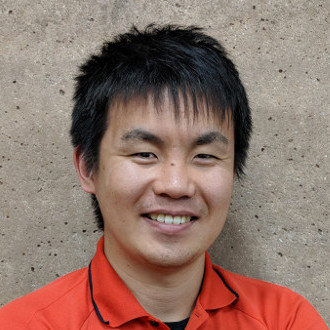
Ph.D. (Computer Science)
Research Interests:
- Machine learning
- Computer vision
- Natural language processing
- Information retrieval
- Split computing
Email: yoshitom@uci.edu
Website: https://yoshitomo-matsubara.net/
Education:
- 2022 – Ph.D. in Computer Science, University of California, Irvine, USA
- 2016 – Master of Applied Informatics, University of Hyogo, Japan
- 2014 – B.E. in Computer and Information Science, National Institute of Technology, Akashi College, Japan
Publications:
- Y. Matsubara, N. Chiba, R. Igarashi, and Y. Ushiku, “Rethinking Symbolic Regression Datasets and Benchmarks for Scientific Discovery,” Journal of Data-centric Machine Learning Research (DMLR), 2024
[PDF] [Video] [Preprint] [Code] [Dataset 1] [Dataset 2] [Dataset 3] [Dataset 4] [Dataset 5] [Dataset 6] - F. Lalande, Y. Matsubara, N. Chiba, T. Taniai, R. Igarashi, Y. Ushiku, “A Transformer Model for Symbolic Regression towards Scientific Discovery,” NeurIPS 2023 AI for Science Workshop, 2023
[PDF] [Code] - Y. Matsubara, R. Yang, M. Levorato and S. Mandt, “SC2 Benchmark: Supervised Compression for Split Computing,” Transactions on Machine Learning Research, 2023
[PDF] [Video] [Preprint] [Code] - S. Gupta, Y. Matsubara, A. Chadha and A. Moschitti, “Cross-Lingual Knowledge Distillation for Answer Sentence Selection in Low-Resource Languages,” Findings of the Association for Computational Linguistics: ACL 2023, 2023
[Amazon Science] [Preprint] [Dataset 1] [Dataset 2] - Y. Matsubara, L. Soldaini, E. Lind and A. Moschitti, “Ensemble Transformer for Efficient and Accurate Ranking Tasks: an Application to Question Answering Systems,” Findings of the Association for Computational Linguistics: EMNLP 2022, pp 7259–7272, 2022
[PDF] [Amazon Science] [Preprint] [Code] - Y. Matsubara, N. Chiba, R. Igarashi and Y. Ushiku, “SRSD: Rethinking Datasets of Symbolic Regression for Scientific Discovery,” NeurIPS 2022 AI for Science Workshop, 2022
[PDF] [Code] [Dataset 1] [Dataset 2] [Dataset 3] - Y. Matsubara, M. Levorato and F. Restuccia, “Split Computing and Early Exiting for Deep Learning Applications: Survey and Research Challenges,” ACM Computing Surveys (CSUR), Volume 55, Issue 5, Article No.: 90, pp 1–30, 2022
[PDF] [Preprint] - Y. Matsubara, D. Callegaro, S. Singh, M. Levorato and F. Restuccia, “BottleFit: Learning Compressed Representations in Deep Neural Networks for Effective and Efficient Split Computing,” Proceedings of 2022 IEEE 23rd International Symposium on a World of Wireless, Mobile and Multimedia Networks (WoWMoM), pp. 337-346, 2022
[PDF] [Preprint] [Code] - Y. Matsubara, R. Yang, M. Levorato and S. Mandt, “Supervised Compression for Resource-Constrained Edge Computing Systems,” Proceedings of the IEEE/CVF Winter Conference on Applications of Computer Vision, pp. 2685-2695, 2022
[PDF + Supp] [Preprint] [Code] - Y. Matsubara, “torchdistill: A Modular, Configuration-Driven Framework for Knowledge Distillation,” Third Workshop on Reproducible Research in Pattern Recognition at ICPR ’20, pp. 24-44, 2021
[PDF] [Preprint] [Code] - T. Hossain*, R. L. Logan IV*, A. Ugarte*, Y. Matsubara*, S. Young and S. Singh, “COVIDLies: Detecting COVID-19 Misinformation on Social Media,” (Best Paper Award) Proceedings of the 1st Workshop on NLP for COVID-19 (Part 2) at EMNLP 2020, 2020
[PDF] [OpenReview] [Demo] - D. Callegaro, Y. Matsubara and M. Levorato, “Optimal Task Allocation for Time-Varying Edge Computing Systems with Split DNNs,” GLOBECOM 2020 – 2020 IEEE Global Communications Conference, pp. 1-6, 2020
[PDF] - Y. Matsubara, D. Callegaro, S. Baidya, M. Levorato and S. Singh, “Head Network Distillation: Splitting Distilled Deep Neural Networks for Resource-constrained Edge Computing Systems,” IEEE Access, Vol. 8, pp. 212177-212193, 2020
[PDF] [Code] - W. Schallock, D. Agress*, Y. Du*, D. Dua*, L. Hu*, Y. Matsubara* and S. Singh, “ZOTBOT: Using Reading Comprehension and Commonsense Reasoning in Conversational Agents,” 3rd Proceedings of Alexa Prize (Alexa Prize 2019), 2020
[PDF] - Y. Matsubara and M. Levorato, “Neural Compression and Filtering for Edge-assisted Real-time Object Detection in Challenged Networks,” 2020 25th International Conference on Pattern Recognition (ICPR), pp. 2272-2279, 2021
[PDF] [Supp] [Preprint] [Code] - Y. Matsubara and M. Levorato, “Split Computing for Complex Object Detectors: Challenges and Preliminary Results,” Proceedings of the 4th International Workshop on Embedded and Mobile Deep Learning (EMDL ’20), pp. 7-12, 2020
[PDF] [Preprint] [Code] - Y. Matsubara and S. Singh, “Citations Beyond Self Citations: Identifying Authors, Affiliations, and Nationalities in Scientific Papers,” Proceedings of the 8th Workshop on Mining Scientific Publications (WOSP ’20), pp. 9-20, 2020
[PDF] [Code] - Y. Matsubara, T. Vu and A. Moschitti, “Reranking for Efficient Transformer-based Answer Selection,” Proceedings of the 43rd International ACM SIGIR Conference on Research and Development in Information Retrieval, pp. 1577-1580, 2020
[PDF] [Amazon Science] - Y. Matsubara, S. Baidya, D. Callegaro, M. Levorato and S. Singh, “Distilled Split Deep Neural Networks for Edge-Assisted Real-Time Systems,” Proceedings of the 2019 Workshop on Hot Topics in Video Analytics and Intelligent Edges (HotEdgeVideo ’19), pp. 21-26, 2019
[PDF] [Code]
